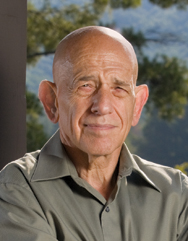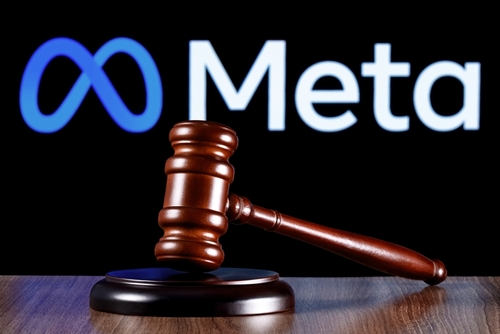A Shot at the Second Amendment

Photo: Copyright, 2007, Jupiter Images Corp.
Web Extra: District of Columbia v. Heller filings
The U.S. Supreme Court had not even decided whether to take the case when National Rifle Association lobbyist Wayne LaPierre fired off the distress flare:
“The biggest Second Amendment court battle in history is about to begin—one that will have a huge impact on you, your children and every other American gun owner for generations to come,” LaPierre wrote in an August fundraising letter to the NRA’s 4.3 million members. “And I’m not exaggerating a bit.”
He’s probably right there.
The NRA wants money—lots of it—to make sure the District of Columbia’s handgun ban stays buried good and deep. That’s where an appeals court left it after an unprecedented decision early this year that killed it as a violation of the Second Amendment’s right to keep and bear arms.
The decision on March 9 by a split panel of the U.S. Court of Appeals for the District of Columbia Circuit marked the first time that a federal appellate court used the amendment to invalidate a gun-control regulation.
The district has asked the U.S. Supreme Court to resurrect the city ordinance containing the ban, which also requires owners to secure rifles and shotguns with trigger locks or keep them disassembled. District of Columbia v. Heller, No. 07-290. The justices are expected to decide by early November whether to accept the case. It may give the court the clearest chance ever to say once and for all whether the Second Amendment protects an individual’s right to own guns, as the D.C. Circuit held, or merely affords states a way to arm their militias, as nearly every other court to consider the issue has concluded.
If the tone of LaPierre’s letter didn’t sound urgent enough, he used plenty of underlined boldface type and capital letters to drive home his point. He told the faithful a top-notch brief may cost as much as $1.2 million.
“For gun owners and NRA members, this is the biggest legal battle that we have ever fought, or will ever fight—and its outcome will probably impact every law-abiding American gun owner,” LaPierre wrote in the five-page letter. “It is a battle we simply cannot afford to lose.”
Here’s where LaPierre heads into a wrong turn: It’s not an NRA case. In fact, the gun rights supporters who filed it complain that lawyers working for the NRA, concerned the case could backfire, spent considerable time and money trying to scuttle it. The association finally was dragged kicking and screaming before the Supreme Court after the prospect of review appeared more likely than it has in years.
“They recognized this was a good case and D.C. was the perfect place,” says plaintiffs lawyer Robert A. Levy, a senior fellow at Washington’s libertarian Cato Institute. “That’s what concerned them.”
Levy, who is bankrolling and pushing Heller to the Supreme Court out of his own pocket and on his own time, says the NRA first sent two lawyers to try to dissuade him from filing the case. After that failed, Levy says the NRA tried to hijack the case by filing a competing case, then trying to consolidate the two.
To boot, Levy says, the NRA supports congressional legislation to repeal the gun ban, which could render Heller moot. He also wonders why the NRA waited more than 25 years to challenge the 1976 D.C. ordinance.
BREAKING A CASE
NRA lawyers say they’re engaged in nothing more than prudent case selection in much the same way the NAACP incrementally approached civil rights litigation—one baby step at a time.
But although they fought the Heller plaintiffs at the onset, the NRA ultimately couldn’t stay away. Its leaders just can’t afford to let members and contributors see them get cold feet after years of waiting for a Second Amendment case to reach the Supreme Court, confides one lawyer who regularly represents the association as outside counsel.
Andrew Arulanandam, a spokesman at NRA headquarters in Fairfax, Va., declined comment on the case. However, he says, the NRA continues to support legislative repeal, first proposed in 2003 but given little chance of passage before the Supreme Court decides what to do with Heller. The association also filed an amicus brief in the D.C. Circuit supporting the Heller plaintiffs, and it intends to file another in the Supreme Court if the justices grant cert, he says.
Arulanandam also says he believes the NRA previously had gone to court against the district, perhaps during the ban’s early days, but he was unable to provide details. The first challenges came to the D.C. Circuit only recently in Levy’s case, 478 F.3d 370 (March 9), and in the NRA-sponsored competitor, which the appeals court pitched for standing. Seegars v. Gonzales, 396 F.3d 1248 (2005).
“We’ve been involved in this issue longer than anyone else,” says Arulanandam. “For anyone else to say they have an exclusive right to this issue is extremely arrogant. As long as there’s been a gun ban in the District of Columbia, we’ve been involved.”
But it’s not the first time the NRA and other gun rights advocates have found themselves at cross-purposes. A California gun rights lawyer gripes that the NRA argued against him and his clients in 2003 in their challenge to the state’s bar on assault weapons, only to switch sides and use the same argument to support the plaintiffs when they asked the Supreme Court to take the case.
Like Heller, the case of Silveira v. Lockyer, 312 F.3d 1052 (9th Cir. 2002), was regarded at the time as nearly a sure bet for cert. Lead plaintiffs lawyer Gary W. Gorski of Sacramento, Calif., recalls NRA lawyer Chuck Michel asking for a copy of his brief as Michel prepared to ask the full 9th U.S. Circuit Court of Appeals at San Francisco to hear the case after a panel rejected his arguments to lift the ban.
“He said he wanted to file a supporting brief,” Gorski recalls, “then he files this thing trying to shoot me down.”
FRETTING BILATERALLY
Though the NRA champions individual ownership under the Second Amendment, its critics say the association shares one concern with gun-control advocates: Both fear that a definitive Supreme Court statement against them on the Second Amendment would cripple, if not kill, their causes.
“The NRA wants to be the one to define the meaning of the Second Amendment,” says Josh Sugarman, executive director for the anti-gun Violence Policy Center in Washington. Sugarman’s 1992 book, National Rifle Association: Money, Firepower & Fear, is widely regarded as one of the most authoritative histories of the organization.
“They don’t want the Supreme Court to do it, because the [NRA view] is good for [the fundraising] business.”
Discouraging freelance plaintiffs is important to the NRA, whose lawyers worry they tend to file complaints that throw multiple theories against the wall to see what sticks. Such cases can hurt the larger cause, the lawyers say, because they increase the risk of setting unfavorable precedents that may be difficult to undo over time. In California, they call such plaintiffs “orange robers,” says NRA lawyer Michel—a reference to the brightly clad Buddhist monks who torched themselves on Saigon streets during the 1960s in futile demonstrations against the Vietnam War.
“At the end of the protest, they’re dead,” says Michel, who, as amicus for the NRA-affiliated California Rifle and Pistol Association, filed the brief arguing against standing for Gorski’s clients in Silveira.
“When you’re trying to litigate on some principle, you don’t want to clog the case up with tangential issues,” says Michel, who practices in Long Beach. “You want to make the case as simple as possible.”
Besides a Second Amendment issue, Silveira presented a hodgepodge of other causes of action under section 1983 of the Civil Rights Act of 1871 and the First, Fifth and 14th amendments. They included a takings claim and violations of equal protection, privacy and associational rights.
Though the appeals panel produced the most extensive judicial discussion of the Second Amendment to date, it went for the collective militia right and then booted the individual plaintiffs for lack of standing.
Yet another NRA lawyer took the same argument Michel made against the plaintiffs and used it to support them in their unsuccessful request to persuade the Supreme Court to hear the case. Michel says the California group and the national association have different boards and don’t march in a policy lockstep. Just the same, NRA headquarters praised Michel’s earlier work in a press release announcing its Supreme Court Silveira brief.

Robert Levy. Photo by John Warner
MAKING A CASE
The Second Amendment contains only 27 words: “A well-regulated militia, being necessary to the security of a free state, the right of the people to keep and bear arms, shall not be infringed.” But though the text is terse, the debate appears endless.
Lawyers on both sides expect the tension between the NRA and other gun rights supporters to persist even if the justices decline to hear Heller.
But while Silveira’s buffet of claims was the kind of case that would leave experienced constitutional litigators breathless, Heller comes to the Supreme Court with a bare-bones Second Amendment claim designed so that any judgment on the merits rests on the court’s interpretation of the right.
“We wanted a clean Second Amendment case uncomplicated by other things,” Levy says.
The district stripped down the issue even further by electing to ask the Supreme Court to hear arguments for the handgun ban only. Its lawyers didn’t request cert on a separate holding by the D.C. Circuit that the restrictions on long guns also violated the Second Amendment.
“We felt that was the core issue in the case,” says D.C. Attorney General Linda J. Singer. The outcome either way could affect gun control at the national level, and critics on both sides say the district may have done itself and other jurisdictions a favor by walking away from the case with an opinion that binds only the nation’s capital. After all, the D.C. Circuit addressed guns in the home only. So, for example, people still can’t carry guns in public or in vehicles.
But Singer says the district had no choice but to defend the ban in a case driven mostly by outsiders.
“This is not an issue for the residents of the District of Columbia,” she says. “There is no division here. I think the district not going forward creates a danger for other jurisdictions. We have to defend our laws. Folding, I don’t think, was the right thing to do.”
Though Levy is a native of the district, he moved to Maryland 25 years ago. Today he splits his time between a gated community in Naples, Fla., and a home in Asheville, N.C. The investment analyst-turned-lawyer doesn’t own a gun and doesn’t want one. For Levy, the case really isn’t about guns.
“For me, it’s not just about [gun] policy,” Levy says. “It’s about the Constitution. That’s paramount.”
Levy first started considering a challenge to the D.C. ban in 2002. The Supreme Court hadn’t addressed the Second Amendment since 1939, when it cryptically held for the collective rights version in the case of a defendant charged with possessing a sawed-off shotgun. United States v. Miller, 307 U.S. 174. Time to take another look, Levy figured.
He took encouragement from a shift in Second Amendment scholarship away from the collective rights model and toward an individual right.
Perhaps the most notable convert was Harvard Law School professor Laurence H. Tribe, who, in the 2000 edition of his treatise American Constitutional Law, concluded—albeit reluctantly—that the amendment provides an individual right.
Next, in 2001, the New Orleans-based 5th U.S. Circuit Court of Appeals became the first to hold that the Second Amendment does indeed confer an individual right. Nevertheless, in refusing to dismiss an illegal gun possession charge against a defendant under a domestic violence injunction, the court also held the law could reasonably restrict the right. United States v. Emerson, 270 F.3d 203. That gave Levy a circuit split, one of the major ways to get through the Supreme Court door.
Then-U.S. Attorney General John Ashcroft jumped all over Emerson. Before the case was decided, and as Justice Department lawyers were in court arguing the collective rights view, Ashcroft told the NRA in a May 2001 letter that he, too, endorsed an individual right. After a split panel issued its decision for individual rights in October 2001, Ashcroft sent a memo the next month to all 93 U.S. attorneys, adopting it as the department’s position.
In addition, the district and its ban presented unique opportunities. The federal appeals court there never had decided a Second Amendment challenge to the ordinance, leaving it unconstrained by precedent. Moreover, as a federal enclave, the district is unquestionably covered by the amendment. So Levy could save for another day and court the case for incorporating it to the states.

Linda Singer. Photo by Ron Aira
PICKING PLAINTIFFS
Meanwhile, over at the Institute for Justice, a libertarian public-interest law firm in Arlington, Va., lawyers Clark M. Neily III and Steve Simpson also had been batting the D.C. ban around.
“He’s a gun aficionado, and I have a few guns myself,” Neily says. “And we’re both libertarian public-interest lawyers. We thought maybe we should challenge that.”
Because the institute focuses on private property rights, school choice, free speech and economic liberty, Neily would have to do any gun cases on his own time, separate from his day job. Simpson was unable to commit, but Neily hooked up with his old buddy Levy, whom he had known since both clerked out of law school for U.S. District Judge Royce C. Lamberth in Washington.
The time to strike had arrived. So Neily and Levy set out to plan the litigation. First they needed clients, and they’d better be the good and wholesome, milk-drinking type who could elicit sympathy from the court.
“We talked to a lot and we rejected a lot,” Levy says. “We didn’t want criminals. We didn’t want loudmouths.”
Word of the contemplated challenge spread quickly. In August 2002, Levy received a call from George Mason University law professor Nelson Lund, who holds the NRA-endowed Patrick Henry Professorship of Constitutional Law and the Second Amendment. Lund wanted to meet with Levy and Washington lawyer Charles J. Cooper, a longtime NRA litigator.
Also attending the Aug. 29 meeting in a Cato conference room were Neily and Gene Healy, another Cato lawyer who has since dropped out of the case.
In interviews and in court documents, Levy and Neily say the NRA representatives tried to talk them out of filing the case, initially captioned Parker v. District of Columbia.
(On appeal, the case became District of Columbia v. Heller when lead plaintiff Shelly Parker and four other plaintiffs were eliminated by the D.C. Circuit for lack of standing. Dick Anthony Heller, an armed court security guard, continued as the sole surviving plaintiff, though the others have asked the Supreme Court to let them back into the case.)
Lund and Cooper worried that while lower courts may go for an individual right, the Supreme Court as then composed may not be so accommodating.
“Lund and Cooper encouraged Parker counsel either not to file the case or, if the case were filed, to build a ‘trap door’ that would give the court a basis, if it chose, to avoid a four-square holding on the Second Amendment and thereby minimize the likelihood of the Supreme Court reaching that issue,” the Parker plaintiffs later wrote in a brief detailing a related dispute with yet another NRA lawyer.
Neily says he and his colleagues already had considered the NRA’s concerns and dismissed them. Lund and Cooper weren’t any more convincing in person. “Nothing they said really changed our view,” he says.
Lund declined comment. Cooper did not return telephone calls seeking comment.
SWITCHING SIDES
After they had assembled a group of six plaintiffs, Levy and Neily filed Parker on Feb. 10, 2003. Also on board by then was Alexandria, Va., litigator Alan Gura. He would do most of the heavy lifting, crafting pleadings and arguments as the case slogged on for four years. But Levy and his lawyers hadn’t heard the last of the NRA.
Seven weeks later, on April 4, the NRA filed Seegars through veteran outside counsel Stephen P. Halbrook of Fairfax, Va. Without even calling the Parker lawyers first, he moved to consolidate Seegars and Parker. Levy and his colleagues were not pleased.
“You just don’t do that to another lawyer,” Neily says. “Honestly, that set the tone for things. It was not well-received.”
Instead of the Second Amendment claim the Parker plaintiffs had envisioned, the NRA loaded its case with a Fifth Amendment due process claim, another mixed due process and equal protection argument, a civil rights claim under section 1981 of the Civil Rights Act of 1866, and a theory that the district lacked the authority under its municipal code to enact the ban in the first place.
The addition of Ashcroft as a defendant in the NRA case really needled the rival plaintiffs. Normally, the city attorney prosecutes gun ban violations, which are misdemeanors, while the attorney general typically will pursue such charges as added counts to felony cases, which the Justice Department prosecutes.
But with Ashcroft in the case and Justice’s enforcement role uncertain, standing would surely become an issue. As the sole defendant in Parker, the district hadn’t raised standing.
But Ashcroft’s Emerson memo notwithstanding, Justice did challenge standing—with near fatal results. Standing ultimately killed Seegars and almost killed Parker when the court concluded that none of the plaintiffs except Heller faced imminent prosecution or injury that would allow them to challenge the ban. Heller survived because he was the only plaintiff to attempt to register a gun with the district, which rejected his application.
Meanwhile, the NRA again began to press its argument in Congress for passage of the D.C. Personal Protection Act, the 2003 legislation that would have repealed the ban. Levy says that this spring he finally persuaded NRA lobbyist LaPierre to back off, for at least a little while. Still, it was just another distraction the Parker lawyers didn’t appreciate.
“I had to spend a number of weeks on Capitol Hill because of it,” Gura says. “If the NRA’s bill had passed, it would have mooted our case and vacated our [D.C. Circuit] opinion.”
Moreover, Levy says, Halbrook was conflicted because Levy had briefly retained him in late October and early November 2002 to research the ban. Halbrook also met with Heller and Parker, which prompted their lawyers to demand that he withdraw, claiming the NRA case Halbrook filed harmed former clients’ interests. Halbrook says he never had an attorney-client relationship with any of the Parker plaintiffs and thus owed neither them nor Levy any ethical duty.
The Parker plaintiffs also resisted consolidation.
“Asked bluntly what benefit he saw to consolidation, Halbrook explained that the NRA wants him to argue the case, and this was a method of assuring him argument at the court of appeals,” they wrote in arguments covering both consolidation and a separate motion to recuse Halbrook.
“Halbrook stated that he and the NRA would not be satisfied with merely submitting an amicus curiae brief,” the Parker plaintiffs continued. “According to Halbrook, the circuit court might ignore his amicus brief, but it would be forced to listen to him at argument if the cases were consolidated.”
Halbrook doesn’t see it that way.
“The assumption that the NRA does or doesn’t want a Second Amendment case in the [Supreme] Court is just that—an assumption,” he says.
While the Parker plaintiffs blamed Halbrook for unnecessarily naming the U.S. attorney general as a defendant, Halbrook says they were shortsighted not to do so. If someone stopped local police from enforcing the law, the feds could step in.
“We were compelled to put in the federal defendants,” Halbrook insists. “What good would an injunction against the D.C. police do if you don’t have one against the federal police or against federal prosecutors?”
And though vindication of principles is an important goal of constitutional litigation, so, too, is winning, Halbrook says. After all, it’s still a real case with real clients, and they expect to win. Thus, Halbrook maintains, he had to file a complaint with multiple theories.
“I’ve had enough experience to know that when you challenge a law, you use what works,” he says. “As a lawyer, you try to help these people and you make allegations in your complaint that might do that.”
STANDING PAT
U.S. District Judge Emmet G. Sullivan denied the consolidation motion in a July 2003 order that suggested he simply didn’t want to be bothered by it.
“Consolidation of the two cases would require resolution of complex attorney-client ethical and professional responsibility questions prior to any attempt to resolve the underlying substantive issues,” Judge Sullivan wrote.
In the end, it also turned out that the NRA actually shot itself in the foot by having named Ashcroft as a defendant. A divided D.C. Circuit panel kicked the Seegars plaintiffs out of court and never reached the merits.
Unwittingly or otherwise, the NRA almost shot down Parker anyway. Though the district never challenged the plaintiffs’ standing, trial judge Sullivan raised it on his own after it first surfaced in Seegars. A different appeals panel took the hint and left only Heller alive to carry on. But Levy says he must have done something right.
“As it turns out, we won and they lost,” he points out. “So that says something.”
For his part, Halbrook isn’t exactly gushing with congratulations for the NRA’s rivals.
Says Halbrook: “The Parker plaintiffs were really lucky with the panel they got.”



